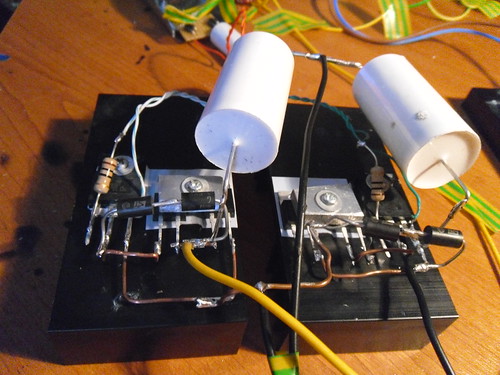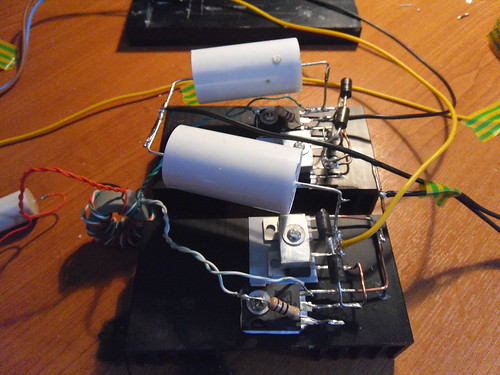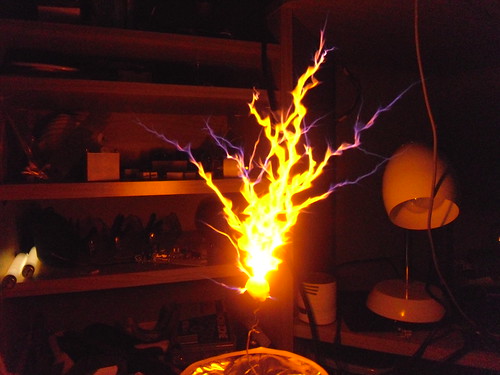Sigurthr
0
- Joined
- Dec 11, 2011
- Messages
- 4,364
- Points
- 83
Ya, internal diodes are always too slow/small for TC purposes and should be bypassed with MUR series ultrafast high-current diodes. You'll notice a major drop in heating.
Thanks!
I just realized today I can remove the 555 chip to see how it functions in CW, haha. So I did that and it still runs great with not much more heating, but again this primary is high impedance and only lets a small current through. Nice to know it works fine though. I DO hear 120Hz overlay though so I need better filtering on my mains DC buss. That is the next step now, then put in a switch to turn off the 555 for easy CW operation.
Is anyone familiar with 555 PWM topology? I've never really used it and could use a refresher (or a link to a refresher). I know 555 astable/bistable very well though, but its PWM output, scheme, method of operation, and range, is all new to me. And without a scope I can't just take a look while turning potientiometer knobs, hehe.
BTW, Ionlaser555, How did you apply the audio modulation to the cathode Mosfet in your coil? I was thinking of using a Schmitt Trigger to feed the enable pins of my UCC Gate Drive chips with a square wave form of input audio, but I think that would probably distort the audio heavily. I know that works for Midi modulation very well, but I don't think it would work for true analogue audio. You got awesome fidelity on yours so I'm curious how you did it.
Thanks!
I just realized today I can remove the 555 chip to see how it functions in CW, haha. So I did that and it still runs great with not much more heating, but again this primary is high impedance and only lets a small current through. Nice to know it works fine though. I DO hear 120Hz overlay though so I need better filtering on my mains DC buss. That is the next step now, then put in a switch to turn off the 555 for easy CW operation.
Is anyone familiar with 555 PWM topology? I've never really used it and could use a refresher (or a link to a refresher). I know 555 astable/bistable very well though, but its PWM output, scheme, method of operation, and range, is all new to me. And without a scope I can't just take a look while turning potientiometer knobs, hehe.
BTW, Ionlaser555, How did you apply the audio modulation to the cathode Mosfet in your coil? I was thinking of using a Schmitt Trigger to feed the enable pins of my UCC Gate Drive chips with a square wave form of input audio, but I think that would probably distort the audio heavily. I know that works for Midi modulation very well, but I don't think it would work for true analogue audio. You got awesome fidelity on yours so I'm curious how you did it.
Last edited:






